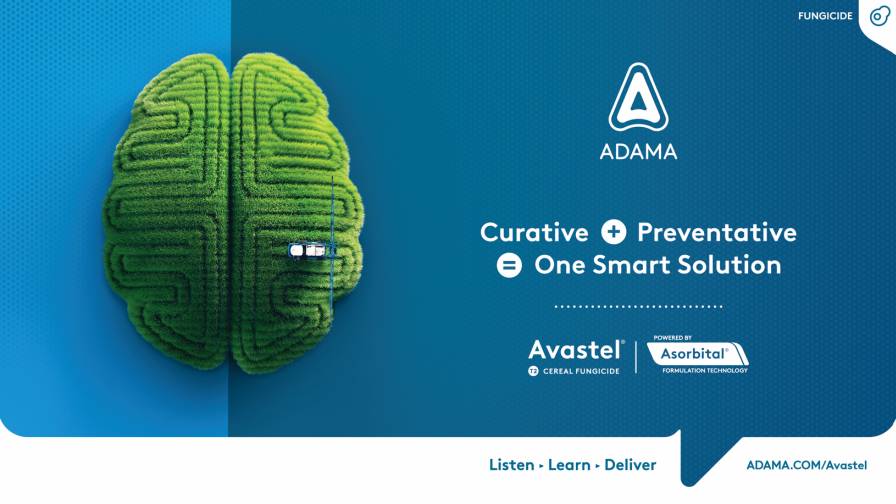Sourcing Generic Agchem Products from China

Editor’s Note: This is part one of a two-part series on sourcing agchem products from China. Please see the June 2013 issue of FCI for part two or visit our online archives.
Over the past 15 to 20 years, the quality and purity of Chinese-made generic technical grade agchem products have improved significantly. The days when products came contaminated with all sorts of non-chemical objects such as nuts, bolts, screws, black particles, brooms, cloth material and sand is now, by and large, history. (When nuts and bolts were found as part of the product, I used to tell people that they had over-paid for the purchase since part of the plant came with it!) This has been achieved mostly through old and dilapidated plants built in the pre-privatization era making way for new and modern ones located in chemical industrial zones and also adopting more stringent production control practices. However, getting chemical impurities down to levels demanded by developed country-markets remains a challenge for many plants. For others, producing products of high-purity levels and doing it consistently remains elusive.
For the past 10 years or so, many plants have started to value-add and have been offering formulated products instead of just exporting technical-grade products. This is reflected by the phenomenal increase in exports of formulated products of a variety of formulation types and not just exporting the old EC and WP formulations. In 2011, for the first time, the export of formulated products (750,000 tons) exceeded that of technical-grade products (670,000 tons). The availability of adjuvants from multinational companies with plants located within China has certainly been a major contributory factor. In some cases, these suppliers offering technical services along with their adjuvant products have accelerated the advancement of the Chinese in coming up with better and more sophisticated formulations.
Having come thus far, many plants are still unable to produce quality products, especially formulated, with consistency. Why is that so? I think it is mainly the challenge of changing mindsets. For a plant that has been producing technical-grade products for years that now tries to use the same facilities and manpower to produce formulations, old practices die hard. Technical-grade products could be produced day in and day out at levels of hundreds and thousands of metric tons annually. These are quality-controlled and then bagged off for exports.
Now, the demand for each active ingredient, individual formulation type, pack size or packaging type is significantly smaller per order or per shipment. The shop floor staff must deal with a significantly higher level of detail and diligence. This is where the issue lies. They simply cannot adapt and cope with such a phenomenal change needed in their production operations. The higher staff turnover during the past few years due to demand for experienced personnel only adds to the difficulties in achieving smooth, orderly production of formulated products, which require much closer attention to detail than making technical.
Needless to say, technical-grade product manufacturers will have to revamp staff and even management, as well as mindsets and shop floor production practices, before they can produce formulated products of high quality consistently. This needs to be clearly demonstrated before overseas buyers from more sophisticated, and hence higher-value, markets will dare to accept formulated products from China. So, to put things in perspective, the recent years’ phenomenal increase in exports of formulated products are mainly to developing countries and not to the higher-value developed countries, which still prefer to purchase technical-grade products.
Whether the dedicated formulators in China will rise to the occasion and fill this gap of the technical grade product manufacturers remains to be seen. Obviously, in these dedicated formulation plants, they do not have the mindset constraints of the technical manufacturers, since their entire operations are dedicated to formulating and exporting formulated products. But then, typically, such a dedicated formulator makes many products and formulation types which tend to scare buyers from sophisticated, high-value markets away. They are afraid of potential cross-contamination. On top of that, most of them have capacity issues per formulation type or per packaging type.
Most of these formulation plants will have a tough time passing the plant audits of these large and sophisticated buyers. Having said that, some plants are already audited and are in fact producing formulations for MNC companies, especially those operating and selling in the Chinese domestic market. The day these MNCs ship formulated products from Chinese plants back to their developed country-markets in a significant way and of the more sophisticated formulation types will mark the true success of exports of Chinese-formulated agchem products.
The Fundamentals of Product Sourcing
Given the stage of the current development of the Chinese generic pesticide industry, with over 2,000 plants involved in the production of technical-grade and formulated products, it is not an easy task for any foreign buyer to sort out which ones are good and reliable. These 2,000-plus plants have capabilities that vary significantly.
In addition, the fact that every one of them has a laundry list of products on offer does not make it easy to determine which products or formulations each is actually good at producing. Plant visits are a must before buying anything but then, which plants would one choose to visit? It is a daunting task, no doubt.
Most buyers never get beyond a look-see plant visit, prior to or after the Agrochemex or CAC conferences, if they do make the time to visit. Time is a key resource as China is a big country and it takes a lot of time to travel from one plant to another. But, one of the fundamentals of generic agchem product sourcing is indeed the execution of a plant audit. How many of the buyers have the capability and knowledge to conduct a plant audit? Suffice to say that only very sophisticated buyers conduct it. Buyers from MNCs do, as this is part of their internal standards and practices and they can afford the time and expenses to carry it out with the right manpower from their own home-base operations.
Is a plant audit then a prelude or the answer to a successful and long-term buying relationship with the plant or plants? Unfortunately, this is merely a necessity for minimizing certain risks. In order to have consistent quality products supplied from qualified plants, one needs to develop good relationships with the owners of the plants as well as continuing the audit process on an annual basis. How often have we been hearing, or worse, experiencing first-hand, a change of method of manufacturing or even a change of certain key raw materials in the production of a given product? Yes, way too often!
These ad hoc changes, arising from the plants’ constant need to finding cheaper ways to produce so as to maintain their meager margins, have little or no impact on buyers from less developed countries with less stringent control from their regulatory authorities. But the same can’t be said for those from developed countries with very stringent control on product impurity profiles. More often than not, a plant’s decision to make the changes described above is based solely on their internal needs and no consideration is given to the buyers’ registrations of the product based on submitted manufacturing process and product impurity profile.
It is not within the scope of this article to discuss all the nuts and bolts (no pun intended) of product sourcing from China, but I want to round out this topic by saying that one needs to make time for constant engagement with senior managers as well as key production staff of the plants. This significantly minimizes the number of times you will receive products off-specification, in some shape or form, from the same plant. Let me also emphasize here that this is needed over and above independent lab analysis of pre-shipment samples. No plant owners or senior management want to spring such surprises on their customers, but do understand that staff in production does change and they do also let their guard down from time to time. Low prices and low margins arising from intense competition due to too many plants producing the same products means that no plant can afford the luxury – in fact, it is more a need than a luxury, of having correct processes and checks at every step of the production process. Without the needed continuous plant audits, a buyer is exposed. Hence, this explains why MNCs, though they have many post-patent products sourced from China, have much fewer issues with inconsistencies in quality of their China-sourced products in the market.
The Usual Pitfalls
The most common method in the process of selection or elimination of plants is to ask for a product price quote with the most competitive ones being selected, if indeed further evaluation is done at all. Obviously, this is easy but wrong. Doing it the right way, of course, entails time and resources. One needs to evaluate why some plants quote oftentimes significantly higher prices than others.
Because of the time and resources required that most foreign buyers do not have – and also because some Chinese traders with a better command of the English language have befriended and won over some of the foreign buyers – the latter have consigned or passed on the role of plant audits, quality checks and maintenance of relationships with the plants to them. For whatever values these traders bring to the table, there is no real substitute for the foreign buyers’ own initiatives and efforts to maintain constant engagement of the plants as described above. So, it boils down to liking Chinese food and loving travel in China for a couple of weeks at a time, and to do so several times more outside of the trips that tie in with the two key industry conferences a year. Then, one has to ask oneself whether time and resources are better spent on keeping “the shop” at home running properly or spending time in China carrying out product sourcing.
Some buyers have started to open up an office within China to focus on product sourcing and in some cases, this decision was motivated by the desire to cut out the middleman. Has this been a successful business decision? I have seen some being opened up and some being closed down. For those that opened and then closed down, it was mostly due to not finding reliable and trustworthy staff. In the end, the China office and staff cost them much more than the middleman that they cut out.
Yet, in some cases, the staff in charge of product sourcing and purchasing did not do what they should have done in terms of buying at the right time and at the right price, which is a topic I will cover next month. This could lead to an enormous inventory of products procured at very high prices leading to severe losses for the company they work for when ex-factory prices for these products fall substantially subsequently.
Here again, it is not within the scope of this article to detail all the potential pitfalls but suffice to say that buyers, especially the ones who are business owners or senior managers, have to make a fundamental decision on how they divide their time and resources between doing what they do best at home: marketing and selling products and product sourcing. If the decision is to assign the day-to-day product sourcing roles to someone else, they need to make sure that the party or company selected will do what is needed and not merely sit in their homes or in their Shanghai offices making a few phone calls to the plants, when an order is about to be or being placed.






